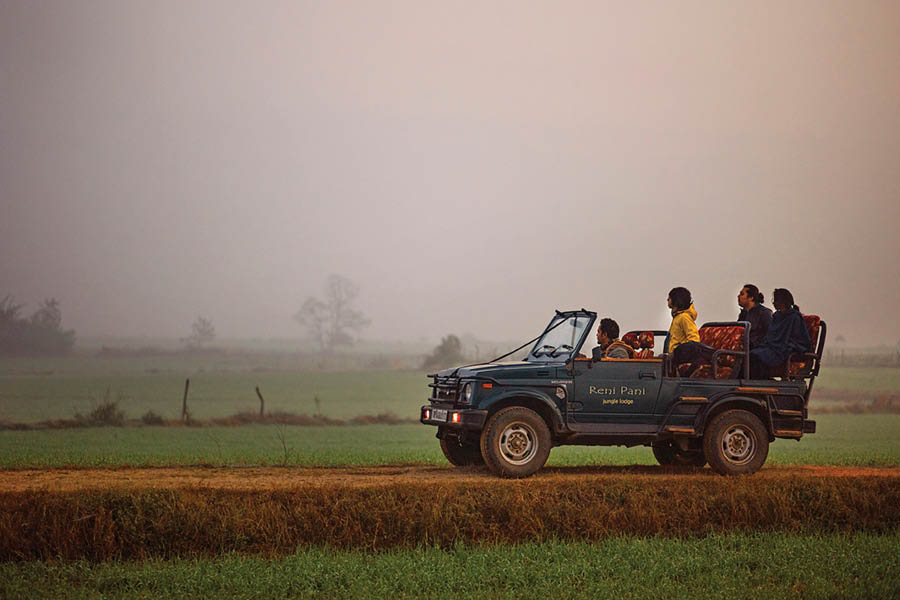In Pimparkhed village, about 75.9 kms away from Pune, barbed-wire collars have become part of farm work.
To the onlooker these appear crude and painful.
But residents of Pimparkhed say they are now as essential as a sickle or a spade. Leopards, they say, can appear anywhere, at any moment.
The collars, rings of metal spikes wired together protect the neck.
Parts of rural Maharashtra are depending on the wired collars for now.
“We wear these collars because leopards can come at any time. Farming is our livelihood; we can't stay at home out of fear,” Vitthal Ranganath Jadhav told ANI. “We see leopards every day. A month ago, my mother was killed by a leopard. Before that, a little girl had died.”
Villagers say, this is the reality of Pimparkhed today.
His mother had stepped out early one morning to feed the cattle. It was 6 AM. The leopard struck without warning, dragged her through dense sugarcane for nearly a kilometre and killed her.
“Everyone in the village is scared. We wear these collars whenever we go out. We request the government to take some action,” he told ANI.
Earlier this month, a leopard killed Rohan Bombe (13) in Pimparkhed village when he was playing near the farms.
After the incident, angry locals set a patrolling van of the forest department on fire and demonstrated outside its base camp against the recurring incidents of leopard-human conflicts in the area.
According to villagers and also media reports, attacks have risen sharply in recent months.
In May a woman working in a chikoo orchard was mauled by a leopard. Just 30 minutes later, another man was attacked in a nearby chilli field. Both survived but sustained serious injuries.
A similar attack in April in Vanarwadi village of Nashik turned fatal. A leopard dragged away Payal Rajendra Chavan, 20, while she was cutting grass. Despite her family’s efforts to rescue her and immediate hospitalisation, she died due to severe injuries and blood loss.
People from leopard attack-prone regions like Junnar, Ambegaon, Shirur in the Pune district also organised a "rasta roko" (road blockade) near Avsari on the Pune-Nashik Highway this month to protest against the frequent attacks by big cats.
In Bengal's Sundarbans, locals venturing into the forest for livelihood often wear masks on the back of their heads to deter tiger attacks.
It is believed the masks trick tigers into thinking the person is facing them. Since tigers stalk from behind, the second face signals that the predator has been spotted, reducing the chances of an ambush.
The Moulis or honey collectors of the Sundarbans also wear these masks.
The Pimparkhed residents want the state to step in.
They want the leopards captured and moved. They want certainty that a routine morning chore will not turn lethal.
The Union Ministry of Environment, Forest and Climate Change has approved a Maharashtra government proposal to begin birth control of leopards. The plan is experimental.
According to forest department officials quoted by PTI, the programme will start in the Junnar forest division. “A proposal of the sterilisation-based population management programme was submitted to the Centre for 125 leopards last year. We have now got the approval to carry out the first-ever sterilisation-based leopard population management programme on an experimental basis on five leopards,” a senior official said.
The Wildlife Institute of India (WII), which has monitored leopard behaviour and conflict patterns in the region, had recommended a controlled sterilisation approach to slow the population growth.

The official explained that the method to be used, immuno-contraception, will involve capturing leopards and injecting them with a contraceptive that prevents pregnancy. The goal, he said, is to manage population numbers without relocation or culling.
But experts say capturing big cats is risky.
In an earlier interview with The Telegraph Online, Sunil Limaye, the state’s retired principal chief conservator of forests (wildlife, west) said, “Animals are just asking for their own space and there is a fight for space; Human-wildlife conflict isn’t because of animals, but because of us”.
In Maharashtra 22 tigers and leopards have been tranquilised and relocated to enclosures including Kanhargaon Sanctuary, Gorewada Zoo in Nagpur, and the Transit Treatment Centre in Chandrapur since July 2023.
But Limaye is not convinced about relocation as a long-term solution.
“According to NTCA [National Tiger Conservation Authority] guidelines, if there is a killing, don’t wait for a second one — tranquilise and remove the animal. But this only shifts the problem,” he said. “The new territory is unfamiliar, and the animal, scared and disoriented, may cause more problems. We’re not solving the root issue.”
In the early 2000s too, Maharashtra faced frequent leopard attacks.
Limaye, then the Sanjay Gandhi National park’s Field Director, and wildlife biologist Dr Vidya Athreya responded by launching Mumbaikars for SGNP in 2011.
It was a community project that reshaped how the city lives with its big cats.
Part of the problem was the narrative itself.
The initiative worked to counter the narrative that all leopards are man eaters.
Residents were advised to avoid stray dogs near forest edges because leopards follow them as prey. Cleanliness was stressed to reduce pigs and rodents, which also draw leopards in.
The project revealed most leopard attacks were not deliberate.












